Hope.
Four little letters, yet together they represent the most powerful substance in the universe. Whether associated with Princess Leia or Samwise Gamgee or Gene Roddenberry, “hope” conjures up images of the impossible victory, the candle in the darkness, the moral arc of the universe finally snapping back to its correct path.
In recent years, the idea of hope—or, as Barack Obama once famously put it, the sheer audacity of hope—has taken on a more tangible form as a movement among storytellers. The term “hopepunk” was originally coined by fantasy author Alexandra Rowland to be the opposite of grimdark. As Rowland puts it:
Hopepunk says, “No, I don’t accept that. Go fuck yourself: The glass is half-full.” YEAH, we’re all a messy mix of good and bad, flaws and virtues. We’ve all been mean and petty and cruel, but (and here’s the important part) we’ve also been soft and forgiving and KIND. Hopepunk says that kindness and softness doesn’t equal weakness, and that in this world of brutal cynicism and nihilism, being kind is a political act. An act of rebellion.
A narrative beacon in a time of political and environmental chaos, hopepunk as a movement is equal parts dreamer and realist, the former holding onto the thought of a better tomorrow and the latter unafraid to get one’s hands dirty in the process. In a time of resistance when the daily news feels like a dystopia fueled by chaos and disinformation, hope is indeed the most punk rock thing you can have.
It’s important to note that hope isn’t as simple as a happy ending. It’s a sense of justice that is greater than a single character’s romantic or business aspirations. In recent years, such a feeling has been seen in the best of science fiction and fantasy, from Annalee Newitz’s The Future of Another Timeline to Mary Robinette Kowal’s Lady Astronaut series to Rowland’s own A Conspiracy of Truths.
But can you find hope when the world has literally ended? The answer, it seems, is yes—if you know where to look.
Throughout many traditional subgenres of science fiction and fantasy, hope is inherently woven into the elements of a narrative. In an epic tale of good versus evil, regardless of whether it takes place in space or a magical realm, the very existence of the proverbial good guys inspires hope, even if it starts with one person. Time travelers have a built-in mechanism to set things right. In cyberpunk, the goal is often to reset a being’s or a society’s humanity back after layers of technology have buried it.
Those examples find hope built into the narrative DNA of the subgenre. The timeline can be corrected, the empire can be overthrown, humanity can overcome machines. The apocalypse, though, presents a much different challenge: where does that hope exist? The apocalypse, whether it came via zombies or climate change or nuclear war, can’t be reset. The dead can’t be brought back to life. Water, infrastructure, and other resources can’t return.
Except that isn’t the end of the story. If it was, then the following books wouldn’t exist. In each of these examples, the end of the world is the story’s foundation. But while the desolate landscape may feel like its own character, each story has a heart much greater than any apocalypse.
Blackfish City by Sam J. Miller
In Sam J. Miller’s Nebula-nominated title, the pressures of the modern world have led to collapse, as climate change and economic warfare have led to a new world. From this emerges Qaanaaq, which symbolically merges these issues into a floating Arctic city. Despite living in post-apocalyptic conditions, the inhabitants of Qaanaaq have not relied upon grimdark violence to re-establish society as seen in so many other end-of-the-world scenarios. Instead, Blackfish City presents a living, breathing society that combines the simple pleasures of spectator sports and steaming noodles with the repeated horrors of economic inequality and deadly disease. In short, Qaanaaq represents a microcosm of the world at large as humanity pushes on—except with an old woman leading a polar bear across the sea.
Buy the Book
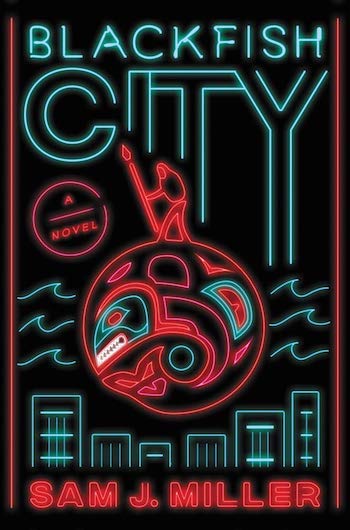

Blackfish City
Station Eleven by Emily St. John Mandel
Emily St. John Mandel’s novel is recognized as a seminal work in post-apocalyptic fiction, something that stands apart from many of the ideas established by The Road or The Walking Dead. Yes, there’s a pandemic, and yes there’s danger on the road, but at the heart of it is a different type of survival. Station Eleven’s shifting narrative puts a spotlight on the survival of ideas rather than daily sustenance, acknowledging that art and music and stories are as vital to our civilization as infrastructure and technology. And by keeping the creative spirit alive, Station Eleven dares to challenge the reader to examine what exists outside of the general definitions of faith and community—and how the answer to that can keep humanity going.
Buy the Book
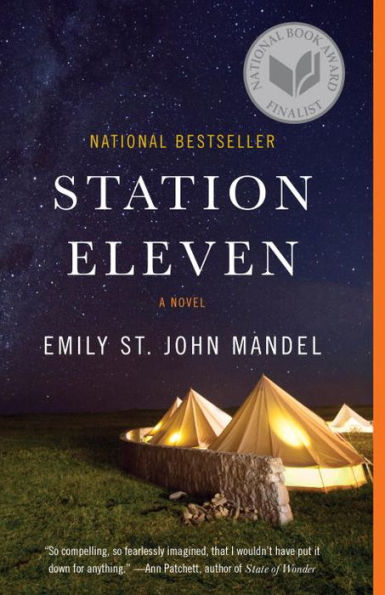

Station Eleven
The Book of M by Peng Shepherd
The cover for The Book of M uses iconography familiar to fans of post-apocalyptic media: the lone vehicle traveling down a dark road. But in the end, Peng Shepherd’s debut novel pushes beyond tropes found in other post-apocalyptic fiction towards the establishment of a new society. In this realm where memories and shadows disappear and mere ideas can become magical reality, ultimately the building blocks of civilization lay in two separate but equally important pieces of the human experience: the stories we carry with us and the search for answers. Each of these feed into the other for an emotional chicken-egg cycle that allows humanity to step forward from the shadows of devastation.
Buy the Book
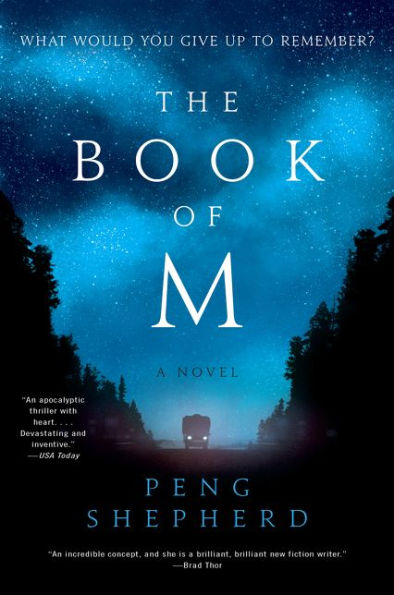

The Book of M
A Boy and His Dog at the End of the World by C.A. Fletcher
The bond between humans and their pets often represent the best, most wholesome parts of our lives. Consider that social media and video streaming sites often feel filled with mudslinging and division, and yet, cute animal photos unite all of us. The unconditional love we give and receive with animals is universal, and yet heightened even more so in C.A. Fletcher’s tale of the apocalypse. In this book, a young boy named Griz traverses the post-apocalyptic landscape following The Gelding, an event that leaves only thousands in the world. Griz sets out on a simple quest: to find his dog.
Through his journey, Griz encounters both humans and people, some helpful and some harmful. Things get messy of course, and the plot twists and turns, though the bond between Griz and his dog remains the foundation of the story. Through it all, Griz maintains his humanity by refusing to let the desolation and violence pull him down. Holding onto hope in our world is hard enough, but maintaining that humanity in the face of nothing sometimes needs a guiding light—even one with four legs and a wagging tail.
Buy the Book
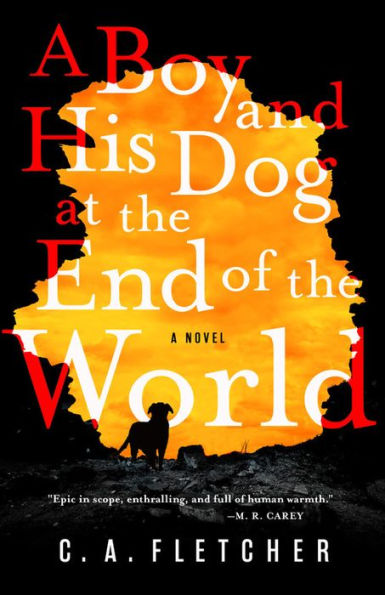

A Boy and His Dog at the End of the World
A Song for a New Day by Sarah Pinsker
If Station Eleven dove into how live theatre could carry on the human spirit, Sarah Pinsker’s book gives that a punk-rock boot to the face. Rather than a single decimating event for humanity, Pinker portrays a world on edge with death coming from multiple sources: powerful viruses, climate change, terrorist attacks, and more. These threats take a mirror image of our own world and, to quote Spinal Tap, turn it up to 11. The public response to this is an authoritarian rule, where public gatherings are illegal and homogenized entertainment rules the day.
This repression leads to two very different points of view: dynamic performer Luce and corporate employee Rosemary. As their stories begin to intertwine (along with some cool worldbuilding for transforming the live music experience), this dangerous world details the risks of suppressing the artistic spirit. As Luce begins to perform illegal concerts, Pinsker deftly illustrates a key point: art, hope, and rebellion often overlap, making each an indomitable part of the human spirit.
Buy the Book
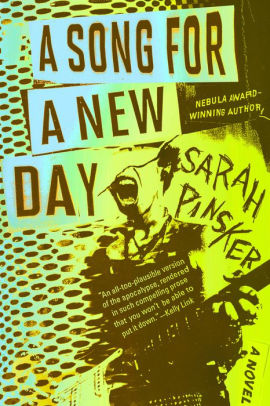

A Song for a New Day
Hope is only human.
Despite the devastation in these examples, hope is found simply by existing and engaging in the things that make us human: relationships, art, and community. This all boils down to a common thread through each of these examples—in each story, humans adapt rather than give up.
In fact, that core trait is more than just a narrative tool, it’s a scientific theory called variability selection. “Our brains are essentially social brains,” paleoanthropologist Rick Potts told Scientific American in 2013. The originator of the term, Potts spoke about how humans may be the most adaptive species in earth’s history. “We share information, we create and pass on knowledge. That’s the means by which humans are able to adjust to new situations, and it’s what differentiates humans from our earlier ancestors, and our earlier ancestors from primates.
Resiliency, adaptability, making the best out of situations even in the face of widespread destruction—that’s not just the way to survive after the apocalypse, but to thrive when everything else has gone. Should the world end (hopefully only a fictional one), then there’s still a reason to be optimistic that the survivors won’t always be murdering each other over resources, despite numerous stories portraying this.
Our wiring is a little better than that.
We change. We adapt. And we find a way to overcome. Fiction offers a mirror to humanity, and by creating the most extreme and hopeless circumstances with end-of-the-world stories, it becomes clear that hope will always win. Because, as it turns out, hope is an inherently human thing.
And in times like these, where headlines can feel more dystopic than post-apocalyptic fiction, hope might be the most powerful thing in the world.
When he’s not writing about sci-fi for Tor, The Mary Sue, StarTrek dot com, and other geek media, Mike Chen writes sci-fi books. His second novel A Beginning At The End (January 14, 2020, MIRA/HarperCollins) is an intimate post-apocalyptic story with “heart, hope, and humanity” (Publishers Weekly). Visit his website or follow him on Twitter for geekery discussion, dog photos, and many curse words. Visit him on twitter and on his website.











This is an interesting topic – I’ve certainly found my day uplifted by the memory of Ms. Rowland’s comments.
That said, I have not heard of any of these books and nothing in the descriptions makes me interested in reading them.
I’ll go find my copy of John M. Ford’s space opera “The Princes of the Air” and get my daily dose of hopepunk that way instead.
How about an older one: Lucifer’s Hammer by Pournelle & Niven.
@2 – making mustard gas so they can kill all the non-white minorities from “The City” to keep their lily white authoritarian state safe? Not my idea of hope. JP let his racist freak flag fly more openly than ever in that one.
This is why I love Becky Chambers.
I was going to suggest “The Postman” by David Brin.